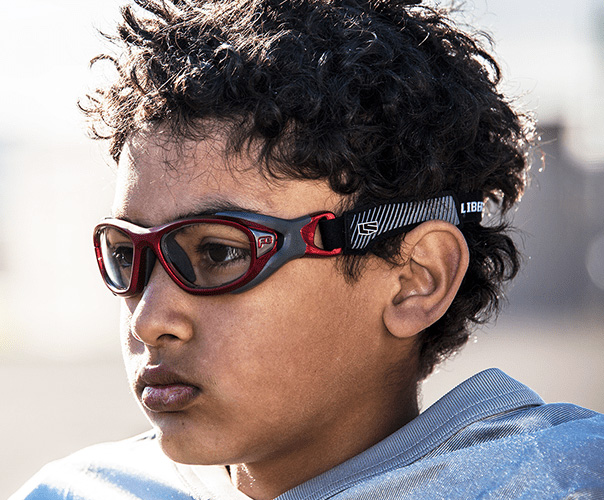In 2018, more than 28,000 people suffered eye injuries related to sports activities. Using the right kind of eye protection while playing sports can help prevent serious eye injuries and even blindness.
Prevent Blindness recommends that athletes wear eye guards when participating in sports. Prescription glasses, sunglasses and even occupational safety glasses do not provide adequate protection.
Sports eye guards are protective eye wear that could look like glasses with temples or straps or even shields attached to head gear. Eye guards come in a variety of shapes and sizes. The eye guards you choose should fit securely and comfortably, and allow the use of a helmet if necessary.
The following guidelines can help you find a pair of eye guards right for you:
- If you wear prescription glasses, ask your eye doctor to fit you for prescription eye guards. If you’re a monocular athlete (a person with only one eye that sees well), ask your eye doctor what sports you can play safely. Monocular athletes should always wear sports eye guards.
- Buy eye guards at sports specialty stores or optical stores. At the sports store, ask for a salesperson who is familiar with eye protectors to help you.
- When purchasing eye guards with lenses, make sure the lenses either stay in place or pop outward in the event of an accident. Lenses that pop in against your eyes can be very dangerous.
- Fogging of the lenses can be a problem when you are active. Some eye guards are available with anti-fog coating and others include side vents for additional ventilation. Try on different types to determine which is right for you.
- Polycarbonate eye guards are the most impact resistant. Polycarbonate lenses are also thinner and lighter than plastic, shatterproof, and provide UV protection. For sports use, polycarbonate lenses must be used with protectors that meet or exceed the requirements of ASTM (American Society for Testing and Materials) International, a global standards development organization.
- Each sport has a specific ASTM standard, so check the package and/or protector to make sure the appropriate ASTM standard designation for the sport is on the product, before buying it. Do not buy the product if there is no ASTM code provided.
- Eye guards which are certified by an authorizedcertification organization such as Safety Equipment Institute (SEI) or independently tested by an accredited laboratory provide independent verified evidence of protection and performance. Do not buy product that is labeled as ‘ASTM Certified’ as ASTM does not certify products.
- Sports eye guards should be padded or cushioned along the brow and bridge of the nose. Padding will prevent the eye guards from cutting your skin.
- Try on the eye protector to determine if it’s the right size. Adjust the strap and make sure it’s not too tight or too loose. If you bought your eye guards at an optical store, an optical salesperson can help you adjust the eye protector for a comfortable fit.
Until you get used to wearing a pair of eye guards, it may feel strange, but bear with it. It’s better than suffering an eye injury — an injury that could possibly lead to the loss of vision!
Please Note
There are new standards which override the ASTM F803 standard for the following sports:
- Women’s Lacrosse – ASTM F3077-17 Standard https://webstore.ansi.org/Standards/ASTM/ASTMF307717
- Field Hockey – ASTM F2713-18 Standard https://webstore.ansi.org/Standards/ASTM/ASTMF271318
- Racket Sports (Racquetball, Squash, Tennis) – ASTM F3164-19 Standard https://webstore.ansi.org/Standards/ASTM/ASTMF316419
